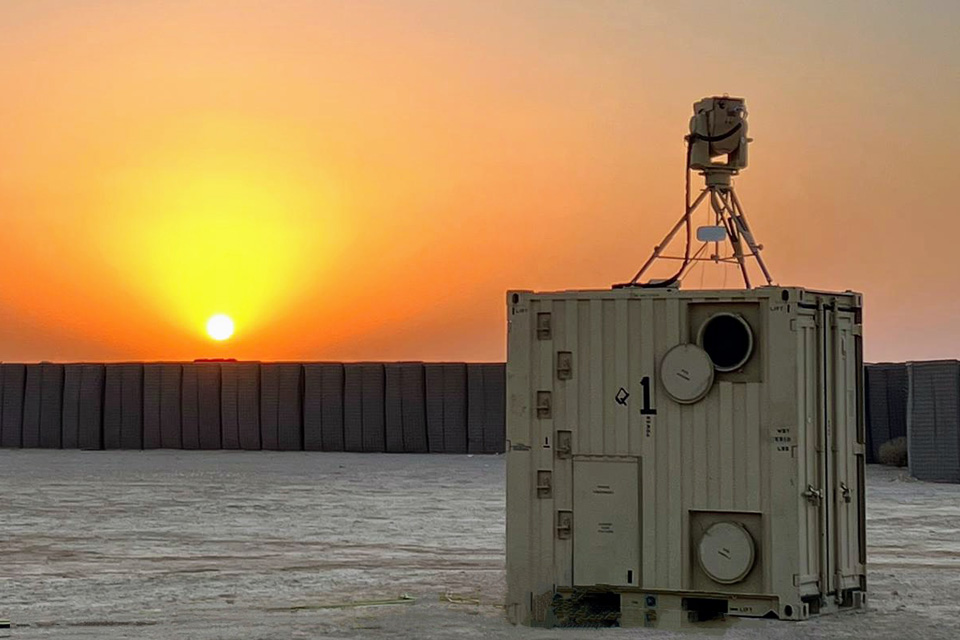Boeing reported that its Compact Laser Weapon System, or CLWS, successfully engaged and defeated large drones for the first time.
The manufacturer said in a statement that its weapon, a 5-kilowatt laser, defeated Group 3 uncrewed aerial systems (UAS), a category of drones weighing up to 1,320 pounds (around 600 kilograms), during a live demonstration. Targeting data was fed to the platform from a radar system.
Drones in this category include platforms such as the Turkish-made Bayraktar TB2, the Iranian Shahed 131 and Mohajer-6, or the Russian Forpost.
The targets were downed during the third edition of the annual counter-UAS exercise known as Red Sands, jointly held by the US and Saudi military at the Red Sands Integrated Experimentation Center in Saudi Arabia.
The US manufacturer stated that Boeing’s CLWS was the only directed energy system featured during the exercise.
“As the only directed energy system at RED SANDS, CLWS again showed that it fits a warfighter need as an important piece of the broader layered air defense puzzle on the modern battlefield,” said Ron Dauk, Program Manager for Boeing’s Directed Energy portfolio.
According to Boeing, the CLWS can detect and defeat single or multiple UASs at distances ranging from 650 feet (200 meters) to 1.6 miles (2.5 kilometers). The system can be operated using an Xbox controller after as little as one hour of training.
Affordable protection from expendable dangers
Directed energy systems like Boeing’s CLWS offer a cost-effective solution for defending against drones, compared to traditional anti-air missile or gun-based systems. This is especially important due to the increasing threat posed by swarms of attritable loitering munitions.
For instance, the Sea Viper missiles recently used by the British destroyer HMS Diamond to intercept Houthi drones in the Red Sea cost around £1 million (€1.165 million) each. In comparison, the operating cost of the British DragonFire laser is only £10 (€11.65) per shot.
The invasion of Ukraine by Russia and the ongoing crisis in the Red Sea have confirmed the effectiveness of attritable systems in modern warfare. One-way attack drones have proven effective in targeting much more expensive and strategic systems. Meanwhile, compact systems at the infantry level have demonstrated their operational effectiveness, providing real-time reconnaissance and extending soldiers’ operational reach.
This has prompted the defense industry to accelerate the development of cheaper air defense methods against small and numerous targets.
